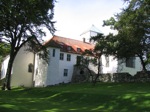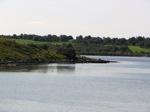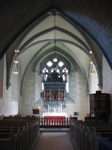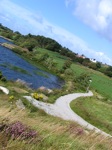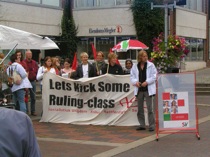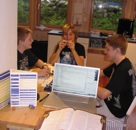As I mentioned in an early posting, Norway’s resistance was very rarely a violent or military effort. One of the primary reasons was that, like anyone in the countless modern wars where occupying militaries collectively punished the local community for acts of sabotage, Norwegians feared reprisals from the occupying German forces. This is one of the many reasons why any closer look at tales of heroic resistance in occupied areas must face the darker and more complicated moral questions of this aspect of war.
Even without violent attacks directly on German forces, however, even more minor acts of sabotage got some kind of reprisals in relatively quiet occupied Norway. I was reading today through the notes and documents of the journalist Halvor Sivertsen today. He is from Stavanger, my hometown here, and spent 17 months in the Grini concentration camp 1942-3. In his wonderful little book Minneskrinet 1940-1945 he has put together his thoughts about wartime, concentration camp life, and resistance.
I was interested in how he shows how German occupying forces’ reactions to Norwegian sabotage, at least here in Stavanger, changed over time. During the first year of occupation, when the resistance in Stavanger committed various acts of sabotage including the cutting of German communication lines and telephone cables, communal punishment for these acts took the form of a fine of 3 kroner. The fine was approved by the mayor of Stavanger, county representative of Rogaland, and the Ministry of the Interior.
Sivertsen has kept his copy of the receipt of his 3 kroner “contribution,” (I was amused that, perhaps to clarify for confused locals, the word “fine” was put in parenthesis in the main text of the receipt after this euphemism) which for lack of time, I leave untranslated here:
Kontribusjon.
Byskattsedlens løpenummer 6837 1940/41
Det kvitteres herved for at det er betalt kr. 3,00 – tre kroner i tilegg til byskatt utlignet med ovennevnte løpenr. for 1940/41, til dekning av en kontribusjon (mulkt) som Reichskommissar für die besetzten Norwegischen Gebiete har pålagt kommunen. Utligningsmåten er godkjent av ordføreren i Stavanger, fylkesmannen i Rogaland og Innenriksdepartemented.
Betalt Stavanger Kemnerkontor
Navn: Halvor Sivertsen
Adr: [Unreadable]
Sivertsen, Halvor. Minneskrinet 1940-1945 (Stavanger: Verbum, 1987), 13.
Later however, this polite fine for damage to telephone lines, complete with receipts and bureaucratic checks gave way to other forms of reprisal. Stavanger police was called in by the fall of 1941 to draft labor for guard duty to watch over the communications network (In postwar Denmark, Danish who were “factory guards” protecting industry from sabotage were prosecuted for collaboration after the war, I’m not sure if they were mostly volunteers or were also drafted. Only in rare exceptions were Norwegian laborers prosecuted for collaboration)
Here, untranslated is the first part of one of his draft notices for 3 hours labor,
Stevning
til
Halvor Sivertsen
…
Etter ordre fra det tyske Sikkerhetspoliti innkalles De herved til vakttjeneste ved tyske telefonkabler i Skankeholen
Torsdag den 16/9 1941 fra kl. 3 til kl. 6
De møter på politikammeret, Nytorrget 1, en halv time før tjenesten begynner. De vil da få nærmere instruksjon.
Den som unddrar seg fra vakttjenesten, vil bli dratt til ansvar av det tyske sikkerhetspoliti, som også selv kontrollerer at vakttjenesten utføres etter ordren…
Vakten plikter i den oppgitte tid å patruljere den oppgitte strekning, nøye å overvåke telefonkablene på strekningen og hindre ethvert angrep på dem. Han er berettiget og etter evne forpliktet til å pågripe eventuelle sabotører og øyeblikkelig melde av til politiet, telefon 20500…
ibid., 15.
Basically, the document says you have to show up at police headquarters for instructions, that you’ll get in trouble with the German gestapo (Or “security police” whoever they are) if you don’t,
and that you are required to patrol the lines, alerting the police by phone if there is any attack on the lines.
In this way, reprisal is combined with forcing local inhabitants to directly prevent sabotage, adding one more moment when local laborers might choose to comply and thus interfere with the resistance, or resist the occupation authorities and possibly land in Grini concentration camp, where you can enjoy (mostly) potato “storm” soup for the duration of your sentence.
As you can see, while things got worse than a 3 kroner fine, this was hardly anything to complain about. Reprisals can, of course, get much much worse. While rare in occupied Norway, whole villages (the houses) were burnt down on some occasions, and mass arrests and beatings also happened. Norway, however, did not witness anything similar to the kind of massive atrocities as reprisals for resistance attacks and sabotage that many other occupied areas of Europe were to see.
